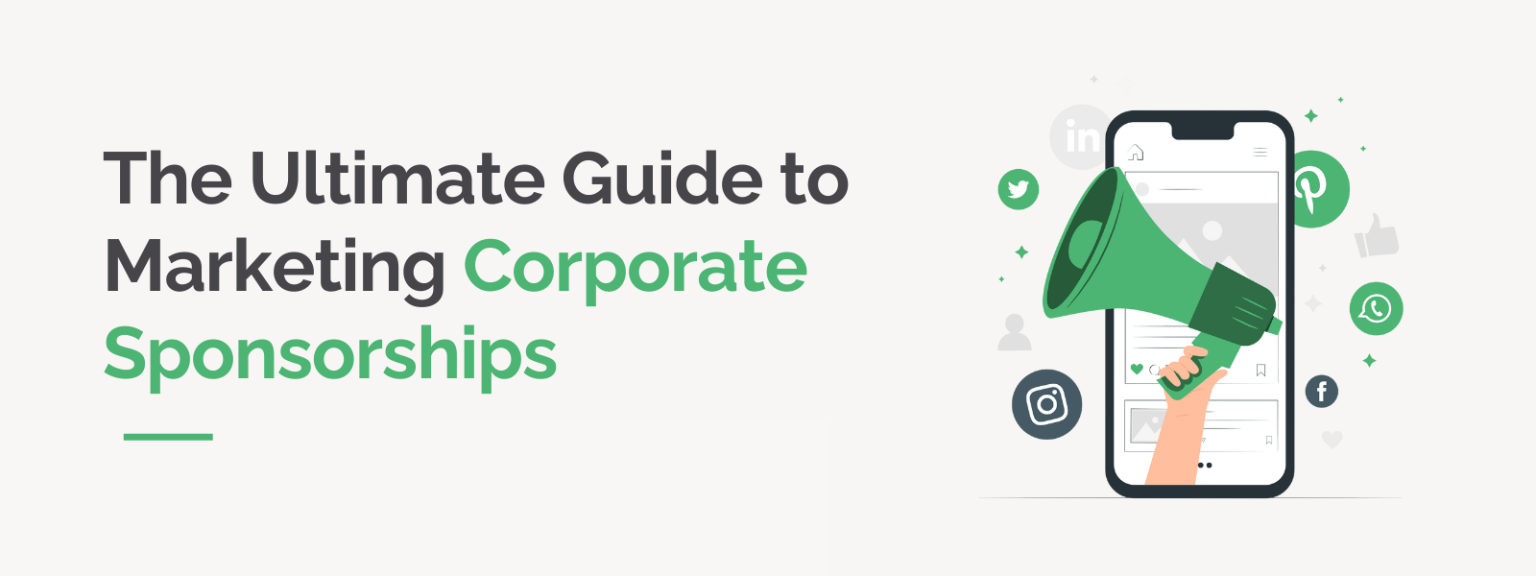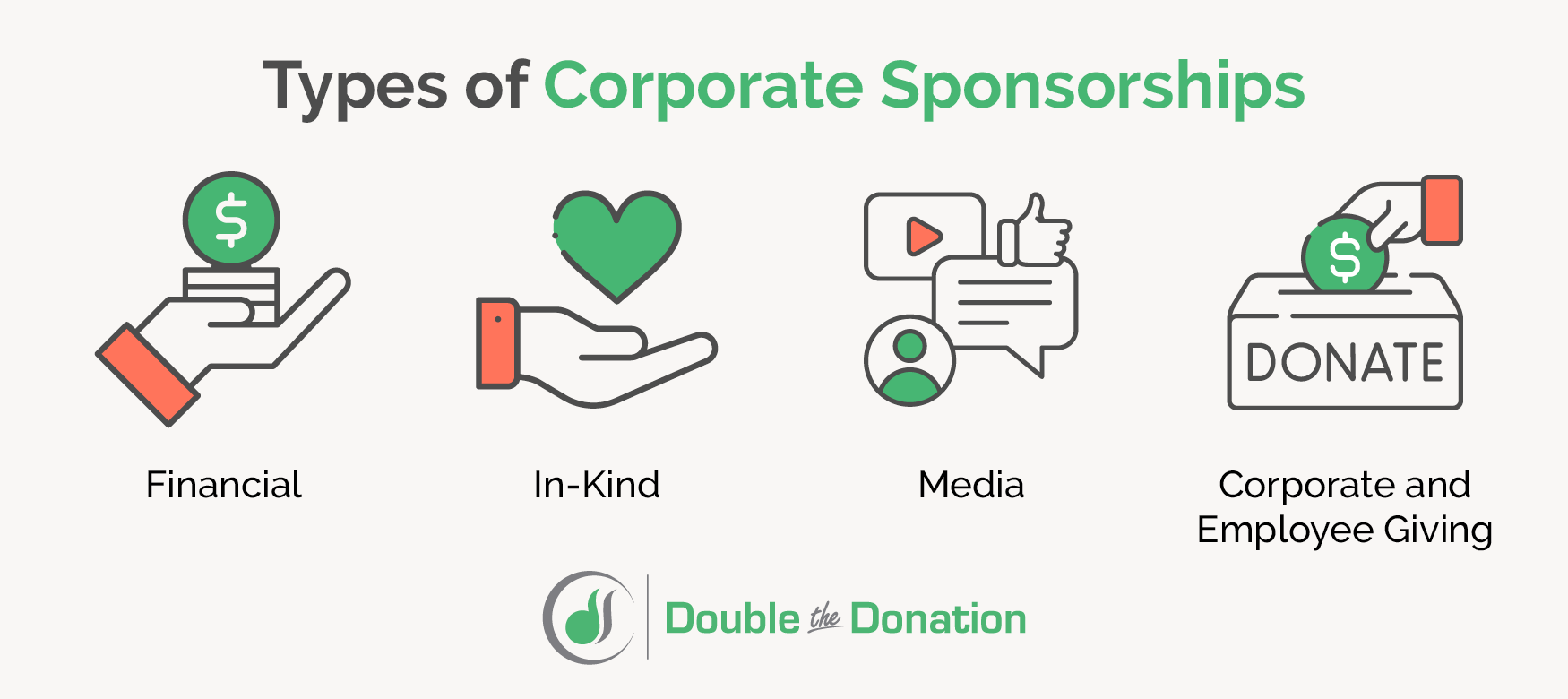The Ultimate Guide to Marketing Corporate Sponsorships
Corporate sponsorships can be a game-changer for nonprofits, offering essential funding, resources, and visibility that help amplify their impact. But attracting and maintaining these partnerships takes more than just a compelling mission. It requires strategic promotion, targeted outreach, and strong relationship-building. In other words, marketing corporate sponsorships is about showcasing the value of partnership in a way that resonates with corporate goals while advancing your nonprofit’s mission.
Lucky for you, this guide will show you exactly how to approach and excel in each of these areas, empowering your nonprofit to build impactful, lasting partnerships. Specifically, we’ll cover:
- Understanding Corporate Sponsorships
- Developing a Sponsorship Marketing Strategy
- Attracting Corporate Sponsorships
- Marketing Sponsorships, Once Secured
From identifying the right partners to creating tailored sponsorship packages and measuring your success, this article will equip you with the knowledge you need to build sustainable, mutually beneficial sponsor relationships. Let’s begin!
Understanding Corporate Sponsorships
Corporate sponsorships can be defined as dedicated partnerships in which a business or other organization provides financial support, goods, or services to a nonprofit, event, or cause in exchange for brand exposure and other benefits.
These partnerships are typically designed to be mutually beneficial. The nonprofit receives valuable resources, funding, or in-kind contributions. Meanwhile, the company gains visibility, positive brand association, and opportunities to align with causes that matter to its target audience.
Corporate sponsorships can take many forms and often include:
Financial contributions
This is the most traditional form of sponsorship, where a company provides monetary support (one-time or ongoing) to a nonprofit. In exchange, the company typically receives brand exposure, recognition, or specific benefits as outlined in a sponsorship agreement.
In-kind donations
Rather than cash, companies provide goods, services, or knowledge that can directly benefit the nonprofit or its programs. Examples of corporate in-kind donations include providing technology, office supplies, event space, or skills-based volunteer hours. This type of sponsorship can significantly reduce a nonprofit’s operating costs while allowing companies to contribute in a way that aligns with their products or expertise.
Media sponsorships
In a media sponsorship, a company (usually a media outlet) provides promotional support to increase visibility for a nonprofit’s event or cause. This support can include free or discounted advertising space, social media promotion, press coverage, or even media production assistance. Media sponsorships are valuable as they help nonprofits reach a wider audience, often without the usual advertising costs.
Corporate and employee giving
Corporate and employee giving programs allow companies and their employees to contribute to nonprofits through matching gift programs, payroll deductions, and volunteer grants or hours. These programs not only boost direct funding but also encourage employee involvement in causes, fostering a culture of philanthropy within the company and organization alike.
Not to mention, the partnerships can be formed for many purposes, such as upcoming events, new or expanded programs, and other projects.
Developing a Sponsorship Marketing Strategy
Before you jump into marketing corporate sponsorships, it’s a good idea to establish a dedicated strategy for doing so. Here are a few steps you can take prior to your marketing rollout:
Identify target sponsors.
Finding the right sponsors is the foundation of a successful corporate sponsorship strategy. Begin by researching companies that have a history of supporting causes similar to your nonprofit’s mission—or that have a Corporate Social Responsibility (CSR) focus that aligns with your values.
A corporate giving solution for nonprofits like Double the Donation can make this research process faster, smarter, and more effective. Our platform offers access to an extensive, continually updated database of corporate giving programs, including matching gifts, volunteer grants, in-kind donations, payroll contributions, corporate grants, and more. With these insights at your fingertips, finding aligned and high-potential sponsors becomes much more manageable.
From there, you’ll want to consider their audience, industry, and goals. Are they looking to boost community involvement, improve their brand image, or reach new markets? Knowing their motivations can help you present a partnership that speaks directly to their interests.
Not to mention, your donors’ employment information can have some valuable insights here as well! If a ton of your donors (particularly those engaging in matching gift programs) work for a specific company, that company can be a great place to kick off your outreach efforts.
Create a value proposition.
Your value proposition is the core of your sponsorship pitch. It essentially answers the question, “Why should a company sponsor us?” making it clear that a partnership with your nonprofit is more than just a charitable act—it’s a strategic, impactful investment.
To craft a strong value-add, focus on the unique benefits a partnership with your organization can offer the potential sponsor. This might include audience reach, media exposure, community engagement, or brand alignment with a meaningful cause.
In your planning, be sure to emphasize how the partnership will advance both the company’s CSR goals and your nonprofit’s mission. And whenever possible, offer real data insights to showcase the tangible benefits a sponsor could gain.
Establish sponsorship packages.
Sponsorship packages provide companies with structured options for involvement, allowing you to offer tailored benefits that meet varying levels of sponsorship commitment.
A tiered sponsorship package (e.g., Gold, Silver, Bronze, etc.) gives businesses flexibility and enables your nonprofit to cater to different types of companies, from local small businesses to enterprise-level corporations.
For the best results, sponsorship packages should include the following key components:
- Levels and Benefits: Define clear sponsorship levels with ascending benefits. For example, higher-tier sponsors may receive more prominent logo placement, exclusive media mentions, or speaking opportunities at events.
- Customization Options: Offer ways for sponsors to customize packages based on their unique goals, such as targeted event promotions or digital-only sponsorships.
- Clear Deliverables: Outline exactly what the sponsor will receive—and the benefits of each package—to avoid misunderstandings and ensure transparency throughout the process.
All in all, having well-defined sponsorship packages will make it easy for potential partners to see the value of working with you and select a level that aligns with their budget and impact goals.
Build a corporate sponsorships landing page.
Your website is where most supporters will go to research your organization and the various ways you offer to get involved. That includes corporate partners! Thus, establishing a dedicated sponsorships page on your website can be a great way to turn interest into action.
Ideally, this page should serve as a one-stop hub where potential sponsors can learn about your organization, explore sponsorship opportunities, and take steps to initiate a partnership. Here are a few key elements you’ll want to include:
- Clear and Compelling Content: Describe your nonprofit’s mission, goals, and the impact of corporate partnerships in a way that engages and motivates potential sponsors.
- Sponsorship Benefits: Clearly outline the benefits of sponsorship, such as brand exposure, media mentions, and event participation.
- Past Successes: Include case studies, testimonials, or success stories from previous sponsors to demonstrate the positive outcomes of your partnerships.
- Easy Contact or Inquiry Form: Make it simple for sponsors to reach out by including an inquiry form, allowing them to express interest and connect with you for more information.
A dedicated partnerships page can be the first step in converting a company’s interest into a lasting sponsorship, providing everything they need to understand the value and start the conversation.
Attracting Corporate Sponsorships
Now, it’s time to reach out to potential sponsors and drum up interest in your organization’s partnership opportunities. Here are three tangible steps you can take to do so effectively:
Initiate personalized outreach.
When it comes to securing corporate sponsorships, personalized outreach can make all the difference. Companies typically receive many partnership requests, so tailoring your communication to speak directly to a potential sponsor’s goals, brand identity, and social values shows you’ve done your research and see them as more than just a funding source.
Start by identifying the right point of contact—ideally someone within their CSR, marketing, or HR departments—and personalize your outreach to reflect the specific ways a partnership could align with their objectives.
Check out these tips and strategies for effectively personalizing your outreach:
- Research Company Values and Goals: Study their mission statement, CSR initiatives, and past partnerships. Reference these in your outreach to show your proposal aligns with their priorities.
- Highlight Relevant Sponsorship Benefits: Frame your proposal around how their brand could benefit from supporting your nonprofit, using language that speaks to their industry or audience.
- Follow Up Thoughtfully: If you don’t receive an immediate response, follow up in a respectful and value-driven way, such as by sharing a relevant success story or impact update.
Initiating personalized outreach demonstrates respect for their brand and positions your organization as a professional, mission-driven partner worth considering. And your supporters may be able to help here, too! If you have a donor who works for one of your potential partners, see if you can use that connection to get your foot in the sponsorship door.
Showcase tangible impact.
Companies want to see the impact their sponsorship will have—not just on your organization but on the communities you serve. By showcasing tangible outcomes, such as the number of people helped, environmental changes made, or specific projects supported, you create a compelling story that resonates with their values and provides concrete evidence of the difference their contribution makes.
Demonstrating tangible sponsorship impact reassures companies that their support is driving meaningful change, making them more likely to engage and continue partnering with you.
Leverage employee engagement.
Employee engagement can be a powerful asset when attracting corporate sponsorships. After all, many companies are eager to involve their employees in social impact activities, as it boosts morale, strengthens team dynamics, and fosters a positive corporate culture.
In order to market corporate sponsorship opportunities well, we recommend highlighting ways the partnership could engage their staff, such as through hands-on volunteer days, team fundraising events, or workplace giving campaigns like matching gifts and more. You can even focus on one-off engagement opportunities such as custom or unique matching gift programs!
Integrating employee engagement options into sponsorship proposals creates added value for corporate partners, strengthening the appeal of sponsorship and establishing a more comprehensive relationship model.
Marketing Sponsorships, Once Secured
After you’ve connected with companies and established sponsorship agreements, you’ll want to market the partnerships to your broader audience, too. Check out these tips and tricks to promote your new partnerships:
Showcase corporate sponsorships on social media.
Social media is a powerful medium for highlighting corporate sponsorships and demonstrating the positive impact your partners are making. By publicly acknowledging sponsors through social channels, you can increase their brand exposure, showcase their commitment to your cause, and encourage engagement from their audience as well.
To do so well, we suggest sharing visuals, videos, or testimonials that highlight the sponsor’s involvement in a way that tells a story and engages viewers. Meanwhile, tagging sponsors and using relevant hashtags can increase the visibility of your posts, too. You can even invite sponsors to collaborate on social media campaigns, such as with joint posts, live events, or story takeovers, to enhance interaction and brand alignment.
When done well, social media posts that celebrate sponsorships help reinforce the sponsor’s brand while also boosting your nonprofit’s credibility and reach.
Not to mention, regularly showcasing corporate sponsorships on social media also reinforces the value of sponsoring your organization to other potential partners!
Incorporate co-branded marketing opportunities.
Co-branded marketing has the potential to amplify the reach and impact of both your nonprofit and the corporate sponsor. All you need to do is create and share promotional content that benefits both brands.
Whether it’s through a joint email campaign, special edition merchandise, or shared media initiatives, co-marketing offers sponsors unique visibility while reinforcing your collaboration and demonstrating a united front for the cause.
Tracking and communicating sponsorship KPIs.
To demonstrate the success and value of your sponsorships, it’s essential to track and communicate key performance indicators (or KPIs) that matter to sponsors. These might include metrics like…
- Brand reach
- Social media impressions
- Engagement levels, open, and click rates
- Event attendance
- Audience demographics
- Specific outcomes achieved with their funding
Regularly reporting on sponsorship KPIs helps sponsors see the tangible results of their investment and strengthens the case for ongoing support. By sharing data-driven insights like these, you can give sponsors a clear picture of the impact their support has had, reinforcing the value of your partnership and laying the groundwork for future collaboration.
Next Steps & Additional Resources
Marketing corporate sponsorships is an art that combines storytelling, strategy, and relationship management. By applying the tactics provided in this guide, your organization can create meaningful partnerships that not only boost funding but also enhance brand recognition and community impact.
Remember, corporate sponsorships are most successful when they provide value to both parties, fostering a sense of shared purpose and mutual growth. As you implement these tips, don’t forget to continuously assess and refine your approach, nurturing long-term relationships that can support your mission for years to come.
With the right marketing, your nonprofit can attract sponsors eager to make a difference together.
Interested in growing your knowledge of all things corporate giving? Check out these recommended resources to learn more:
- How to Identify Corporate Partnerships. Did you know you can use your matching gift software to uncover corporate partnership opportunities? Read this guide to find out how.
- The Ultimate Fundraising Guide to Corporate Giving Programs. There’s more to corporate giving than sponsorships. Browse our guide to corporate giving programs to familiarize yourself with common opportunities.
- Become an Expert: Access The Ultimate Guide to Matching Gifts. Matching gifts can go a long way in engaging your donors and raising more through corporate funding. Get the free downloadable guide to learn more.







